This article was medically reviewed by Luba Lee, FNP-BC, MS. Luba Lee, FNP-BC is a Board-Certified Family Nurse Practitioner (FNP) and educator in Tennessee with over a decade of clinical experience. Luba has certifications in Pediatric Advanced Life Support (PALS), Emergency Medicine, Advanced Cardiac Life Support (ACLS), Team Building, and Critical Care Nursing. She received her Master of Science in Nursing (MSN) from the University of Tennessee in 2006.
There are 8 references cited in this article, which can be found at the bottom of the page.
This article has been viewed 66,929 times.
Bruises are never fun, and that’s especially true when they show up on an extremely visible area like your face. Thankfully, there are a number of first aid techniques and home remedies you can use to heal the impacted area quickly and effectively.
Steps
Performing First Aid
-
1Place an ice pack over the bruise for 10 to 20 minutes at a time. Do this as soon as soon as you see a bruise start to develop. Hold a cold compress, ice pack, or frozen food bag to the affected area for 10 to 20 minutes. Repeat this at least 3 times a day or, for the quickest results, every 1 to 2 hours.[1]
- The ice will slow down any blood flowing to the bruised area, reducing swelling and discoloration.
- If you decide to use a frozen food bag, go with small products like peas since they can easily adjust to your facial shape.
-
2Elevate your head to reduce swelling. While going about your day, make sure to keep your head in an upright position as much as possible. Before going to sleep, place extra pillows behind your head to hold it up slightly. Do this until the swelling around your bruise goes away.[2]
- Keeping your head up may also reduce any pain you’re experiencing around the bruised area.
Advertisement -
3Wait 24 hours before taking anti-inflammatory drugs. If at all possible, avoid taking nonsteroidal anti-inflammatory drugs like aspirin and ibuprofen for at least 24 hours after receiving your bruise. These pain relievers can increase blood flow to the bruised area, making it more difficult for your body to heal.[3]
- In some cases, drugs like aspirin may even cause unintended bleeding.
- If you’re experiencing a lot of pain during the first 24 hours, use a brand of acetaminophen like TYLENOL or Ofirmev to treat your pain. Acetaminophen will not get rid of swelling, but it should make the pain more manageable.
-
4Avoid taking omega 3-fatty acids or other supplements that may thin the blood. Fish oil, vitamin E, Coenzyme Q10, turmeric, and B6 vitamins can all cause your blood to thin. This can, in turn, delay the healing of your bruise. Until your bruise heals, stop taking any of these supplements.[4]
-
5Put a heating pad on the bruise after 48 hours. Once the bruise has had a couple of days to heal up, you can change your ice pack out for a heating pad or hot water bottle. Doing so will help relieve pain around the bruised area and reduce any swelling or discoloration that remains. You can use the heating pad or hot water bottle as often as you’d like.[5]
- If you’d prefer, you can soak your face with warm water instead.
-
6Eat foods high in bromelain, quercetin, and zinc to speed up healing. These nutrients can help reduce bruising if eaten before a facial surgery or speed up bruising after an injury.[6] Some great foods to eat include:
- Pineapple
- Red onions
- Apples
- Dark colored berries like blackberries
- Legumes
- Lean protein like white meat chicken
-
7See a doctor if your bruise hasn’t healed after 2 weeks. Though they may be unsightly, most bruises are not serious medical issues and can be easily healed at home. However, if your bruise refuses to go away after 2 weeks of first aid, see a doctor immediately. In addition, check with your doctor if you experience any of the following during the initial 2 weeks:[7]
- Numbness
- An extreme increase in pain
- An extreme increase in swelling
- The disappearance of color below the bruised area
Applying Topical Remedies
-
1Use arnica once a day to help heal the bruise. Arnica montana is a plant that, when absorbed by the body, can help get rid of bruises. Arnica comes in both tablet and cream form, and you can typically use it once per day.
- Look for arnica at most drug and big-box stores.
- Check your arnica container for exact dosage recommendations.
-
2Apply bromelain cream twice a day to reduce swelling. Bromelain is an enzyme found in pineapples that can help reduce the swelling around bruises. For the best results, rub bromelain cream onto the bruised area 2 to 3 times a day.[8]
- If you’d prefer, you can take a bromelain tablet instead. However, these are often less effective and can lead to digestive issues and a boosted heart rate.
- Do not use bromelain if you are allergic to pineapple.
- You can find bromelain cream at big-box stores.
-
3Cover the bruise with parsley to help it fade. Parsley leaves have natural healing properties that can help your bruise fade away, reduce swelling around the impacted area, and relieve any pain you’re experiencing. For the best results, crush up fresh parsley leaves, sprinkle them over the bruise, and hold them in place using an adhesive or elastic bandage.
- Try using this treatment every night before going to bed so the parsley doesn’t fall off due to movement.
- If you’d prefer, you can make a parsley rub by wrapping the leaves in a thin nylon cloth, soaking the cloth in witch hazel, and holding the cloth to the bruised area twice a day for 30 minutes at a time.
-
4Rub a vinegar solution over the bruise to make it heal faster. Create a solution that’s approximately 1 part vinegar and 1 part warm water. Once you’ve mixed the solution thoroughly, dip a cotton ball or fresh cloth into the liquid and hold it to the bruise for 10 to 20 minutes. This will help break up any blood pools around the impacted area.
- If you’d like, you can use witch hazel instead of vinegar.
-
5Apply vitamin K cream to reduce the bruise’s severity. Vitamin K has a number of healing properties that can help reduce swelling around the bruise and break up blood clots underneath your skin. For the best results, apply a vitamin K topical cream to the affected area twice a day.[9]
- You can find vitamin K cream at most drug stores.
Warnings
- See a doctor if your bruise lasts for over 2 weeks, if the affected area starts to go numb or lose color, or if you experience an extreme amount of swelling or pain.⧼thumbs_response⧽
References
- ↑ http://assets.ngin.com/attachments/document/0094/1818/AustinER-bruises-wounds.pdf
- ↑ https://medlineplus.gov/ency/article/007213.htm
- ↑ https://uncw.edu/healthservices/documents/InstructionSheet-BruiseandHematoma512.pdf
- ↑ https://www.ncbi.nlm.nih.gov/pmc/articles/PMC3676193/
- ↑ https://uncw.edu/healthservices/documents/InstructionSheet-BruiseandHematoma512.pdf
- ↑ https://www.joms.org/article/S0278-2391(14)00093-7/fulltext
- ↑ https://www.luriechildrens.org/globalassets/media/pages/specialties--conditions/conditions/muscle-contusion/muscle-contusion.pdf
- ↑ https://www.ncbi.nlm.nih.gov/pmc/articles/PMC3529416/
- ↑ https://www.ncbi.nlm.nih.gov/pubmed/12140470
About This Article
When a facial bruise first starts to form, hold an ice pack to the area for 20 minutes every 2 to 3 hours to reduce swelling. After 2 days, replace the ice pack with a heating pad or hot water bottle to heal the bruise faster. To help your bruise fade faster, cover the area with crushed parsley while you sleep. Contact a doctor if your bruise doesn’t heal after 2 weeks of home treatment. To learn how to heal your bruise using arnica, bromelain, vinegar, and vitamin K cream, scroll down!

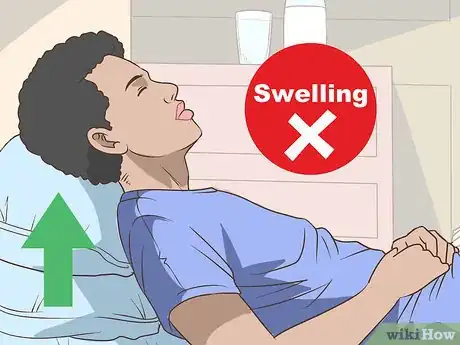




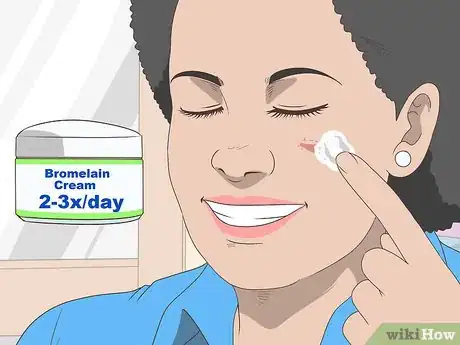

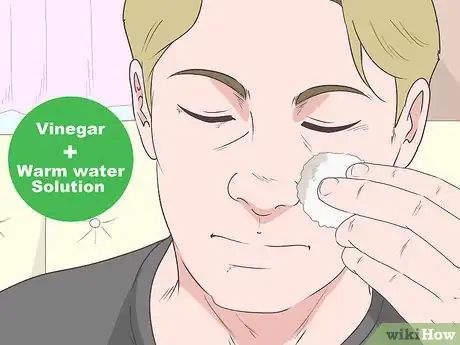
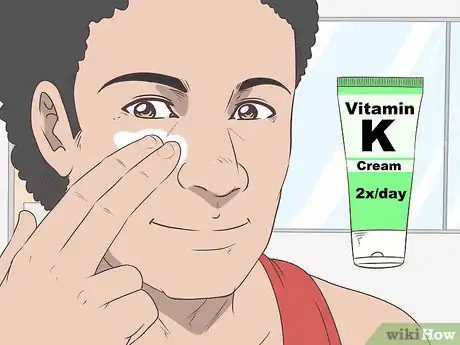
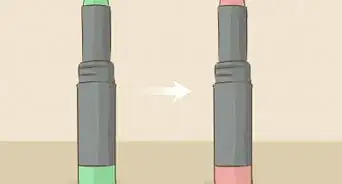



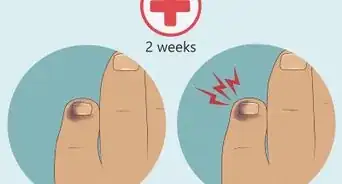




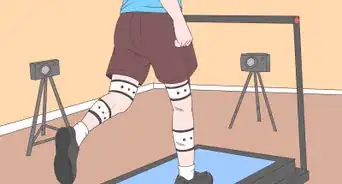
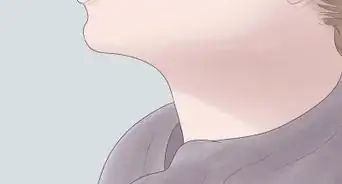
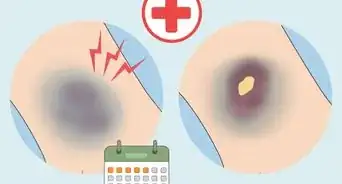
















































Medical Disclaimer
The content of this article is not intended to be a substitute for professional medical advice, examination, diagnosis, or treatment. You should always contact your doctor or other qualified healthcare professional before starting, changing, or stopping any kind of health treatment.
Read More...